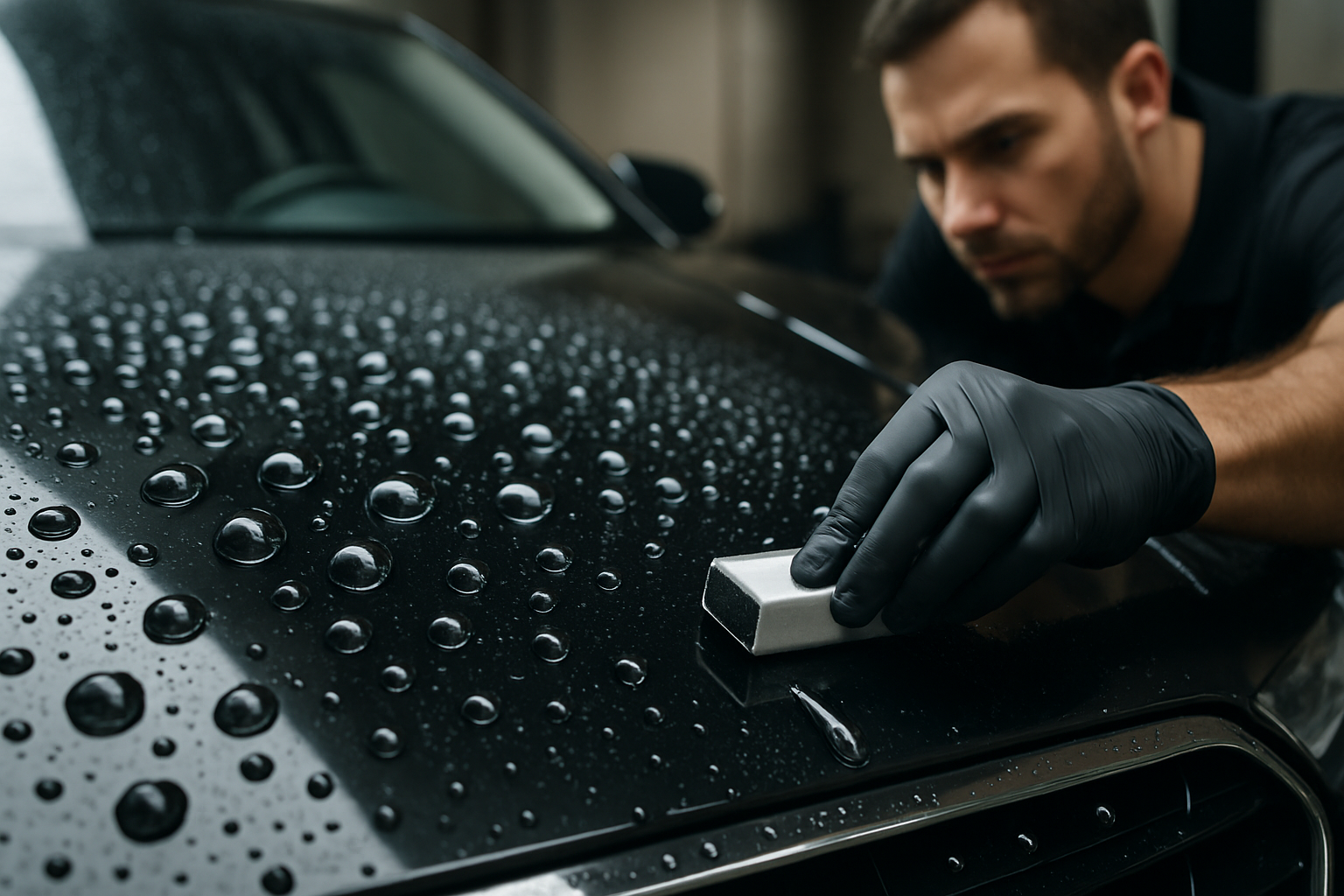Hydrophobic Coatings: The Future of Car Maintenance
In the world of automotive innovation, a revolutionary technology is quietly transforming the way we think about car care and maintenance. Hydrophobic coatings, once relegated to niche applications, are now poised to become a game-changer in the automotive industry. This cutting-edge solution promises to redefine our relationship with car cleanliness, protection, and longevity, offering a glimpse into a future where maintaining a vehicle's pristine appearance becomes effortless and eco-friendly.

From Lab to Road: The Evolution of Automotive Hydrophobic Technology
The journey of hydrophobic coatings from laboratory curiosity to automotive application has been marked by significant technological leaps. Early iterations struggled with durability and cost-effectiveness, limiting their use to high-end vehicles. However, recent advancements in material science have led to more robust, long-lasting formulations that can withstand the harsh conditions vehicles face daily.
Beyond Water Repellency: Multi-Functional Coatings
Modern hydrophobic coatings for automobiles offer more than just water repellency. These advanced formulations now incorporate UV protection, scratch resistance, and even self-healing properties. Some coatings can actively break down organic matter through photocatalytic reactions, keeping the vehicle cleaner for longer periods. This multi-functionality addresses several aspects of vehicle maintenance simultaneously, offering a comprehensive solution for car care.
Environmental Impact and Sustainability
The adoption of hydrophobic coatings in the automotive sector carries significant environmental implications. By reducing the need for frequent washing and the use of harsh cleaning chemicals, these coatings contribute to water conservation and decrease chemical runoff. Moreover, the improved protection against corrosion and wear can extend a vehicle’s lifespan, potentially reducing the environmental impact associated with manufacturing new vehicles.
Challenges and Future Developments
Despite the promising advancements, challenges remain in the widespread adoption of hydrophobic coatings. Durability under extreme conditions, cost-effective application methods for mass-market vehicles, and integration with existing manufacturing processes are areas that require further innovation. Research is ongoing to develop coatings that can self-repair more effectively, potentially leading to vehicles that can maintain their protective layer indefinitely with minimal intervention.
The Impact on Car Care Industry
The rise of hydrophobic coatings is set to disrupt traditional car care practices. Car wash businesses, detailing services, and automotive product manufacturers are adapting to this shift by incorporating these technologies into their offerings. This transformation is not just changing products but also consumer behaviors and expectations regarding vehicle maintenance.
Consumer Adoption and Education
As hydrophobic coatings become more prevalent, consumer education plays a crucial role in their successful adoption. Understanding the benefits, proper application techniques, and maintenance requirements is essential for maximizing the technology’s potential. Automotive manufacturers and aftermarket suppliers are increasingly focusing on educating consumers about these advanced protective solutions.
Integration with Smart Vehicle Systems
The future of hydrophobic coatings in automobiles extends beyond passive protection. Researchers are exploring ways to integrate these coatings with smart vehicle systems. Imagine a car that can detect when its protective coating is compromised and automatically schedule a reapplication, or windshields that adjust their hydrophobic properties based on weather conditions for optimal visibility.
A New Era of Vehicle Protection
Hydrophobic coatings represent more than just a novelty in car care; they signify a paradigm shift in how we approach vehicle maintenance and protection. As this technology continues to evolve, it promises to deliver vehicles that stay cleaner longer, require less maintenance, and offer superior protection against the elements. The fusion of nanotechnology, materials science, and automotive engineering is paving the way for a future where cars not only perform better but also maintain their appearance with minimal effort, ushering in a new era of smart, self-maintaining vehicles.





